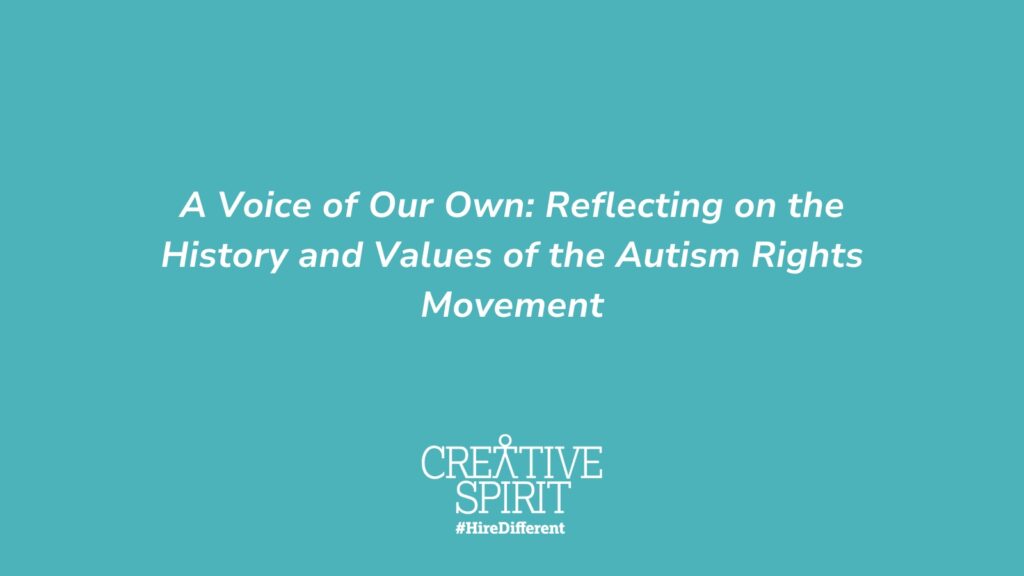Written By: Menachem Rephun, Communications Manager, Creative Spirit

Autism Spectrum Disorder (ASD), a cluster of conditions affecting social interaction and verbal and nonverbal communication, affects over 75,000,000 million people worldwide, according to data from the Centers for Disease Control (CDC). While progress has been made over the past several years in improving inclusion and representation, autism still continues to be heavily misunderstood and stigmatized, creating barriers to inclusion both in employment and in the educational system. The need for inclusion and accessibility has given rise to the autism rights movement, a grassroots effort by individuals with autism to share their distinct perspectives and advocate for themselves in their own voices. Unlike the broader disability rights movement, the autism rights movement is relatively young, dating back to the early 1990s and the emergence of the internet and online communities. In honor of Autism Awareness Month, we’ll be exploring the history of the autism rights movement, its core values, principles, and beliefs, and what it means for people of all ages who are on the autism spectrum today.
The Birth of the Autism Rights Movement
Autism Awareness Month showcases autism both as a term and as a clinical diagnosis, has gone through many evolutions and changes over more than a century. The term “autism” itself was first coined in 1911 by Swiss psychiatrist Eugen Bleuler to refer to a group of symptoms he believed were connected with schizophrenia. In 1943, Austrian-American psychiatrist Leo Kanner coined the term “infantile autism” to refer to 11 children who displayed a preference for aloneness and repetitive behaviors. In 1987, the Diagnostic Statistics Manual (DSM) revised “infantile autism” to “autism disorder”, also including a checklist of diagnostic criteria. Though the exact starting point is vague, the autism rights movement dates back to at least 1993, with the founding of Autism Network International (ANI), the first organization run by and for people with autism. The guiding view of ANI, both at the time of its founding and today, is that autism is not a disease but a different way of being, and as such does not need to be “cured”. The organization has hosted an “autreat”, a conference for autistic people, every year since 1996, in contrast to other conferences in which non-autistic professionals and other experts gathered to discuss autism.
Jim Sinclair, the co-founder of ANI, is widely regarded as a pioneer of the autism rights movement, and has been a staunch advocate of the “anti-cure” position, which was articulated in Sinclair’s 1993 essay “Don’t Mourn for Us”, and which remains a cornerstone of autism advocacy. In that essay, Sinclair clarified ANI’s stance that autism is not something to be ashamed of, and that people with autism deserve to be valued and appreciated as individuals. “You didn’t lose a child to autism,” Sinclair wrote. “You lost a child because the child you waited for never came into existence. That isn’t the fault of the autistic child who does exist, and it shouldn’t be our burden. We need and deserve families who can see us and value us for ourselves, not families whose vision of us is obscured by the ghosts of children who never lived. Grieve if you must, for your own lost dreams. But don’t mourn for us. We are alive. We are real.” Sinclair (who does not identify with either gender) has stated that in their view “different does not necessarily mean defective…This is how I approach characteristics that make me different or abnormal but do not, in and of themselves, compromise my ability to lead a full and meaningful life…. [T]hese may bring me into some degree of conflict with my physical or social environment, but they don’t bring me into conflict with me.” In addition to Sinclair, many other advocates have played a vital role in the autism rights movement. These include Michelle Dawson, an autistic person and autism researcher who has challenged the ethics and science of applied behavior analysis (ABA), a form of therapy based on the science of learning and behavior; Jasmine O’Neill, a pro-neurodiversity author; Judy Singer, who coined the term “neurodiversity”; and many others during Autism Awareness Month.
It is also worth noting that the autism rights movement would likely not have been possible, or at least not nearly as successful, without the emergence of the internet, which helped foster a sense of community and solidarity among people with autism. 1998 saw the founding of Autistics.org, which began internet campaigns in 2000. Other influential sites include Neurodiversity.com, Autism Society.org, and Aspies For Freedom, a solidarity and campaigning group dedicated to raising awareness of the autism rights movement. Aspies for Freedom played a vital role in autistic self-advocacy and promoting the “anti-cure” perspective, until it ceased operations in 2013.
Core Values and Philosophy
While supporters of the autism rights movement are not always unanimous in their opinions, neurodiversity, i.e. the view that autism is simply a different way of being rather than a disorder, has been foundational to the movement since its inception. The autism rights movement is also focused on challenging the ethics of ABA, tackling misconceptions about autism, and ensuring that autistic adults are included in autism organizations and receive the services they need. Some within the movement, such as Michelle Dawson, feel that adults with autism have been excluded through a disproportionate focus on children with autism and their parents, and that there is a notable shortage of services for autistic adults. The autism rights movement also involves pushback against the negative perception of autism as a “national tragedy” or a fatal disease. As Psychology.fandom.com explains in its overview of the autism rights movement, “one of the goals of the movement is to expose and challenge those claims they find offensive.” An instance occurred in 2003, when Dawson, in her essay “Bettelheim’s Worst Crime”, protested against one parent’s assertion (in testimony before the Canadian Senate) that “autism is worse than cancer”. Dawson noted that rather than condemnation, this statement garnered effusive praise from Canadian senators as being “touching” and “moving”. She added that disturbingly, this perspective does not reflect an isolated incident but, on the contrary, is actually the norm and is widely embraced by many in the non-autistic population especially during Autism Awareness Month. “The world is full of Davids, avidly being listened to, being consulted with,” Dawson wrote (David being the name of the parent in question). Ultimately, the goal of the autism rights movement is to dispel misconceptions and harmful stereotypes surrounding autism and to encourage greater acceptance and inclusion.
Criticisms (and Defense) of the Autism Rights Movement
Although it has been beneficial in developing a sense of community and solidarity among people on the spectrum, it is worth noting that the autism rights movement has not been immune to criticism, both from parents and other individuals within the autism community. One point of contention has come from those who feel that the movement focuses too heavily on “higher-functioning” people with autism, such as those with Asperger’s Syndrome, who are capable of verbal communication and living independently, and that the movement’s self-advocates are primarily people who fall under this category. Others have taken issue with the anti-ABA stance of advocates like Michelle Dawson, arguing that this form of therapy has been scientifically proven to be beneficial for children with autism and is essential for their success in adulthood. These critics believe Dawson played a role in the case of Auton v. British Columbia, which ruled that government-funding for non-core medically necessary treatments is not protected under Section 15(1) of the Canadian Charter of Rights and Freedoms.
The autism rights movement and Autism Awareness Month, for its part, has responded to these concerns and criticism with a range of counterarguments. In response to complaints that they are “high-functioning”, some advocates within the movement have pointed out that they themselves were described as “low-functioning” as children; that they too have written but not verbal communication skills; and that some of them have periods when they cannot communicate at all. Other responses point out the circular logic behind the claim that autistic people cannot communicate and therefore don’t have a voice, in that, according to that logic, if they were able to communicate they would no longer be considered autistic, and would not be allowed to speak on behalf of people with autism. Defenders of the autism rights movement also believe that critics rely too heavily on ad hominems, straw man arguments, and a lack of basic understanding regarding the facts and scientific research behind autism. In addition to outside criticism, there are also disagreements within the movement itself, with some feeling that autism should be viewed as a disability, allowing it to fit within the broader disability rights movement. Meanwhile, others have expressed concern that refusing to classify autism as a disability could interfere with essential aid and assistance.
The debate over autistic self-advocacy and autism rights, and how to ensure that all people on the spectrum are fully included and represented in those advocacy efforts, seems unlikely to abate anytime soon. Regardless of which camp or perspective one subscribes to, however, the fact remains that for millions of people around the world, autism will always be a part of their existence. As such, self-acceptance and pride in one’s identity is the most positive and beneficial approach. “It is unproductive to rail against the incurable,” writer Andrew Solomon wrote in a 2008 essay for NYMag.com. “If you can learn to love it, that’s your best chance of happiness. For some people, the love is self-evident; for others, it is acquired through struggle; others cannot do more than pretend to it.” Solomon writes that neurodiversity activists “light the way to such love—a model of social acceptance and self-acceptance that has the capacity to redeem whole lives.” This emphasis on self-esteem and societal acceptance is even more crucial given that only 20% of autistic adults are currently employed, according to 2022 data from the U.S. Department of Labor, Pubmed, and other sources. This is due in large part to sensory challenges, lack of reasonable accommodations, and misconceptions about autism during Autism Awareness Month, among hiring managers, co-workers, and employers. This is where the autism rights movement is poised to have its greatest impact, by de-stigmatizing autism and demonstrating that people with autism can succeed in the workplace when provided with the right encouragement and support. On the plus side, the fact that a wide range of major organizations, including Google, Microsoft, and SAP, have launched hiring programs to include people with autism in the workforce, represents a very encouraging step in the right direction, showing that business leaders have begun to more fully appreciate the exceptional talents of people with autism in engineering, science, mathematics, and numerous other fields. Schools can also be part of the solution by developing Individualized Education Plans (IEP) to help students shift from school to independent, working life post-graduation. Creative Spirit is doing our part by working directly with both businesses and neurodiverse candidates, including those on the autism spectrum, and connecting them with fair-wage employment at companies that truly value inclusion and innovative thinking. Encouragingly, a 2022 from UC Santa Cruz found incremental improvements in representation of autistic adults in film television, books, media coverage, and advocacy organization websites (https://www.news-medical.net/news/20220630/Research-shows-improvements-in-the-representation-of-autistic-adults-in-film-television-books-and-more.aspx). These findings, combined with the fact that many companies are adopting more inclusive hiring practices, we’re confident that the autism rights movement is indeed making inroads in making the voices of people on the autism spectrum heard.






